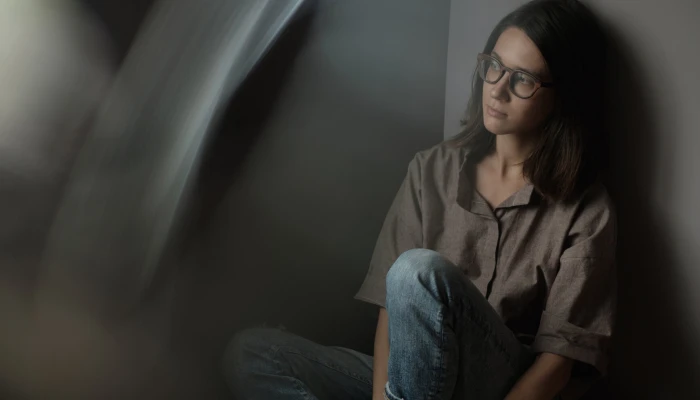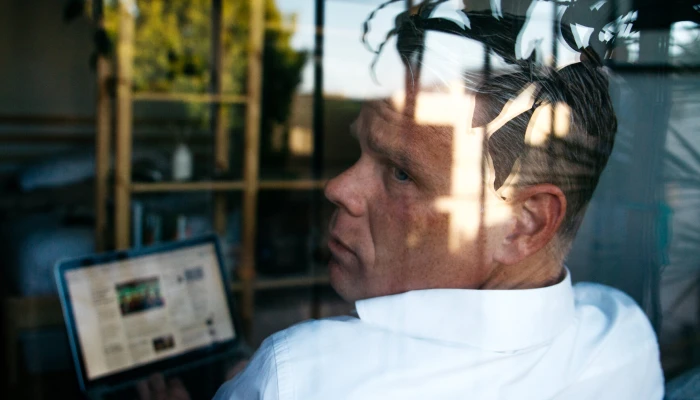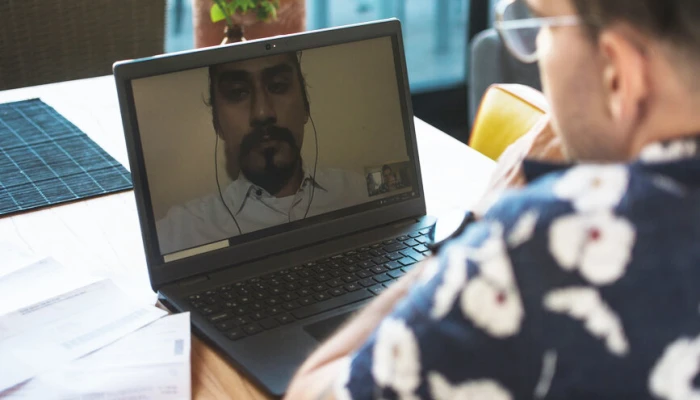R U OK during the pandemic: what to do when someone is not okay
This article contains subject matter, including references to specific thoughts and behaviours, to which you might relate, or that may trigger distress or discomfort.
If you do experience this normal reaction, we encourage you to speak to:
- your Employee Assistance Program, if one's available at your workplace
- Lifeline (in Australia) on 13 11 14
- Suicide Call Back Service (in Australia) on 1300 659 467
- in less urgent situations, your GP or other qualified health professional.
In situations where you or someone you know is in imminent danger, contact:
- emergency services (in Australia) on 000 (triple zero).
Since the first Covid-19 response measures came into effect – what seems like an eternity ago now – we’ve been hearing all too frequently about the negative impacts on people’s mental health. So much so that it might have started to lose its meaning for you, even just a little, especially if you haven’t felt or witnessed some of these impacts yourself.
Now, as we approach another R U OK? Day and World Suicide Prevention Day amid significant challenges, it’s more important than ever to let the current reality for people around us really sink in and to consider our role in stepping up and making a positive difference.
Following the 2020 lockdowns, Australians reported greater levels of psychological distress.1 More were seeking help from mental health crisis support services like Lifeline and Beyond Blue, which received a 18.4 percent and 30.7 percent increase in calls respectively compared to 2019.2
A large part of suicide prevention counts on the eyes, ears, and voices of those on the ground.
And while suicide rates did not spike during the pandemic, it remains the leading cause of death among Australians between the ages of 15 and 44,1,3 and a recent study has revealed that nearly one in ten suicide deaths in Victoria (February 2020 to January 2021) was linked to pandemic-related stress.4
A large part of suicide prevention counts on the eyes, ears, and voices of those on the ground, not to mention online. The people interacting with the people who are at risk. Their colleagues, friends and family.
You don’t need to be a mental health professional or specially trained Mental Health First Aider to lend your support.
Following on from my recent podcast series with Dr Andrew Stock, here are some steps and insights to guide you in observing, reaching out and checking in on those you are concerned about in the workplace, so you can have that potentially life-changing conversation.
How can you tell if someone may be thinking about suicide?
There are warning signs you may notice in your colleague which may indicate that they are not coping well.5-7 They may:
- talk about suicide or death
- display feelings of hopelessness, despair, worthlessness, like they are a burden to others, or trapped
- have dramatic changes in mood
- become withdrawn
- be less interested in activities they used to love
- be unable to concentrate
- care for themselves less (which you may notice in their personal hygiene and appearance)
- engage in reckless behaviour
- be more irritable or angry
- use alcohol or other drugs more
- give away personal belongings and appear to be “putting things in order”
- display higher levels of anxiety or agitation
- experience different or disturbed sleep patterns
- perform to a lower standard at work or be absent more often.
If you observe any of these, particularly where it is out of character for that person, make it a point to check if your colleague is okay, as soon as you can.
How do you start the conversation with someone you are worried about?5,8,9
-
Ask them privately how they are going In a private setting, either in person, over the phone or on a video call, you can say something like, “I have noticed you’re not quite yourself at the moment – are you okay?” If you’re still working from home, you can invite them for a walk during the lunch break or to catch up over the phone after work. Allow yourself ample time for the conversation, in case the person chooses to open up to you then and there.
If the person doesn’t feel ready to talk about it, let them know you’re there if they ever wanted to chat, or ask them if there is someone else who they would feel more comfortable talking to.
-
Give them the opportunity to open up Use open-ended questions that help them share their thoughts with you, such as: “How long have you felt this way?”, “Do you feel this way for most of the day?”, “How are you feeling about that?” “Have you spoken to anyone else about this?”, or “How are you coping?”
-
Listen with empathy
Remember, you are there to listen and not make them feel rushed in any way. Show them you are listening by maintaining eye-contact, giving them time to pause and think in silence, and repeating back what you’ve heard in your own words, being mindful not to interrupt. You can say, “I’m hearing that you’re feeling hopeless and worthless, is this right?”, “Did you feel X because of Y incident?”, “It sounds like you’re not happy there, would you tell me more about it?”Show empathy by recognising, without a hint of judgement, that what they are experiencing is valid. You can say something as simple as “that sucks” or “it sounds so tough, I’m so sorry to hear that you’re going through this”.
What you can do if you believe that the person is at risk of suicide?7,9,10
-
Ask them directly if they are having thoughts about suicide
You can start by saying something along the lines of, “are you having thoughts of suicide?”Then gently ask them these four direct questions:
- “do you intend to take your life?”
- “do you have a plan to take your life?”
- “do you have access to the means to carry out your plan?”
- “do you have a timeframe for taking your life?” (or “have you thought about when you would take your life?”)
If they answer ‘yes’ to any of these four questions, they are at high risk of suicide.
-
Seek immediate help if the person is at high risk of suicide
Call Lifeline on 13 11 14 or the Suicide Call Back Service on 1300 659 467 to get crisis support on what to do next. If the person is in immediate danger, stay in conversation with them and dial 000. -
Connect the person to professional support if they do not appear to be at high risk of suicide at that present moment
Encourage them to see their GP or a mental health professional, or to call a helpline like Lifeline. -
Follow up on how they are going.
Tell them you are there if they ever need someone to chat with again. Check in with the person on a more regular basis to ask how things are and how they are coping.
En Masse offers specialist training in this area: ActNow workshop for mental health crisis intervention and Mental Health First Aid training. Contact us to discuss a program tailored to your audience. For a deeper dive into this topic, listen to my podcast series with Dr Andrew Stock, R U OK at work.
References
- Australian Government. Suicide and self-harm monitoring. Australian Institute of Health and Welfare, 2021. Available from: https://www.aihw.gov.au/suicide-self-harm-monitoring/data/covid-19
- Australian Government. Mental health services in Australia. Australian Institute of Health and Welfare, 2021. Available from: https://www.aihw.gov.au/reports/mental-health-services/mental-health-services-in-australia/report-contents/mental-health-impact-of-covid-19#mental-health-service
- Lifeline. Data & Statistics. Lifeline, 2021. Available from: https://www.lifeline.org.au/resources/data-and-statistics
- Dwyer J, Dwyer J, Hiscock R, et al. COVID-19 as a context in suicide: early insights from Victoria, Australia. Aust N Z J Public Health. 2021;10.1111/1753-6405.13132. doi:10.1111/1753-6405.13132
- Australian Government Department of Health. Suicidal thoughts. Head to Health, 2021. Available from: https://www.headtohealth.gov.au/mental-health-difficulties/challenging-situations/suicidal-thoughts
- R U OK. Trust the Signs, Trust your Gut and Ask R U OK?. R U OK, 2021. Available from: https://www.ruok.org.au/signs
- Australian Government. Suicide. Better Health Channel, 2020. Available from: https://www.betterhealth.vic.gov.au/health/conditionsandtreatments/Suicide
- Queensland Government. How to talk to someone you think is at risk of suicide. Queensland Health, 2021. Available from: https://www.health.qld.gov.au/news-events/news/how-to-talk-to-someone-you-think-is-at-risk-of-suicide
- R U OK. How to ask R U OK?. R U OK, 2021. Available from: https://www.ruok.org.au/how-to-ask
- Beyond Blue. Having a conversation with someone you're worried about. Beyond Blue, 2021. Available from: https://www.beyondblue.org.au/the-facts/suicide-prevention/worried-about-someone-suicidal/having-a-conversation-with-someone-you%27re-worried-about


